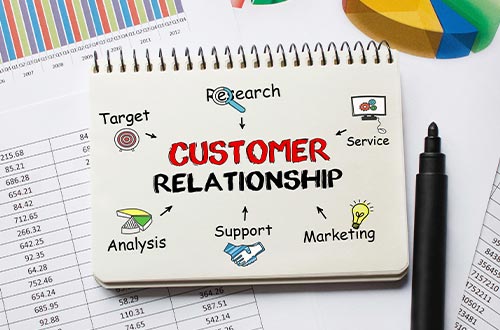Navigating Customer Expectations: Building a Customer-Centric Culture
In today's dynamic business environment, meeting and surpassing customer expectations are critical for organizational success. Establishing a customer-centric culture is among the most effective strategies to achieve this goal. This involves aligning internal processes, investing in employee training, and fostering leadership initiatives that prioritize customer satisfaction. Let's explore the significance of cultivating such a culture and effective strategies to accomplish this objective.
Importance of a Customer-Centric Culture
A customer-centric culture revolves around placing the customer at the forefront of every business decision and interaction. In an era where customers have numerous options and platforms to voice their opinions, their experiences profoundly impact a brand's reputation and bottom line. Cultivating a customer-centric culture fosters loyalty, enhances brand reputation, and drives sustainable growth.
Strategies for Building a Customer-Centric Culture
- Understanding Customer Needs: The cornerstone of a customer-centric culture is understanding the evolving needs and preferences of customers. This necessitates robust data analytics, market research, and active engagement with customers through various channels.
- Aligning Internal Processes: All internal processes, from product development to customer service, should align with the objective of delivering exceptional customer experiences. Cross-functional collaboration and feedback loops are essential to ensure every department contributes to this overarching goal.
- Employee Training and Empowerment: Employees serve as the frontline ambassadors of a company's culture. Providing comprehensive training programs emphasizing empathy, problem-solving skills, and effective communication equips employees to handle diverse customer needs confidently and efficiently.
- Leadership Commitment: Leadership plays a pivotal role in shaping organizational culture. Leaders should lead by example, demonstrating a relentless commitment to prioritizing customer satisfaction in every decision and action. Regular communication and recognition of customer-centric initiatives can further reinforce this commitment.
OneCX Techservices Pvt. Ltd.: A Case Study in Customer-Centric Culture
OneCX Techservices Pvt. Ltd. serves as a prime example of a company that has successfully ingrained a customer-centric culture within its DNA. Since its inception, OneCX has recognized that exceeding customer expectations consistently is key to sustained success. Here's how OneCX has achieved this:
- Investment in Technology: OneCX leverages cutting-edge technology to gain profound insights into customer behavior, preferences, and pain points. Advanced analytics tools enable the company to anticipate customer needs and tailor its offerings accordingly.
- Empowered Employees: OneCX places a high emphasis on employee empowerment and autonomy. Employees are encouraged to take ownership of customer interactions, go above and beyond to resolve issues, and proactively suggest improvements based on customer feedback.
- Continuous Improvement: OneCX views customer satisfaction as an ongoing journey rather than a destination. The company regularly solicits feedback from customers, conducts post-interaction surveys, and analyzes performance metrics to identify areas for improvement.
- Customer-Centric Leadership: At the helm of OneCX is a leadership team deeply committed to fostering a customer-centric culture. They lead by example, prioritize customer satisfaction in strategic decision-making, and champion initiatives that enhance the overall customer experience.
In conclusion, building a customer-centric culture transcends being merely a business strategy; it's a mindset that permeates every aspect of an organization. By aligning internal processes, investing in employee training, and demonstrating unwavering leadership commitment, companies like OneCX Techservices Pvt. Ltd. exemplify how organizations can thrive in today's competitive landscape by prioritizing customer satisfaction. Embracing a customer-centric culture isn't just about meeting expectations—it's about consistently exceeding them, fostering lasting relationships, and driving sustainable growth.


